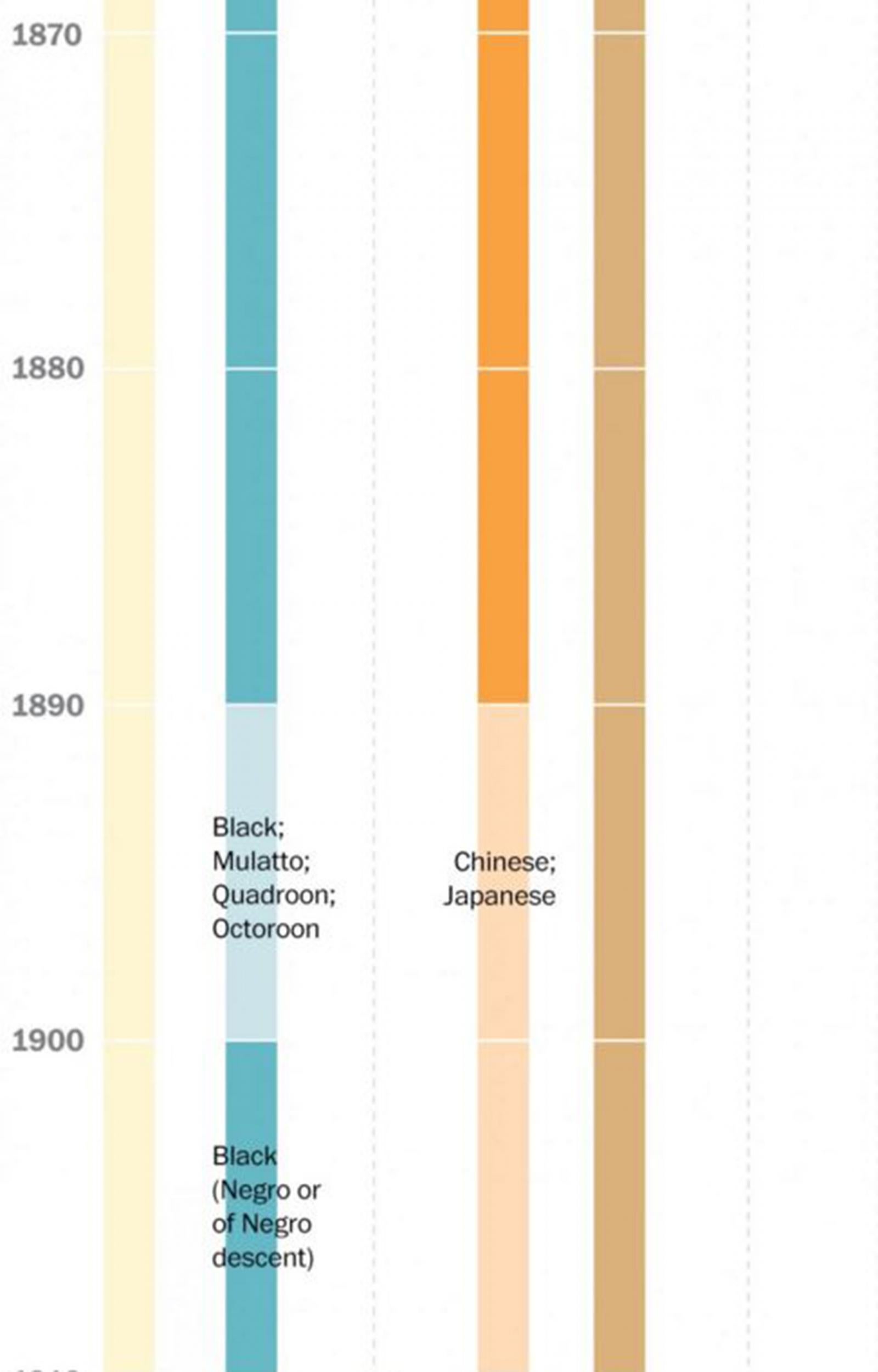Three charts show every term the Census has used to describe America’s racial groups since 1790
Back 1970, only three categories were available: "free white females and males," "all other free persons," and "slaves"

Your support helps us to tell the story
From reproductive rights to climate change to Big Tech, The Independent is on the ground when the story is developing. Whether it's investigating the financials of Elon Musk's pro-Trump PAC or producing our latest documentary, 'The A Word', which shines a light on the American women fighting for reproductive rights, we know how important it is to parse out the facts from the messaging.
At such a critical moment in US history, we need reporters on the ground. Your donation allows us to keep sending journalists to speak to both sides of the story.
The Independent is trusted by Americans across the entire political spectrum. And unlike many other quality news outlets, we choose not to lock Americans out of our reporting and analysis with paywalls. We believe quality journalism should be available to everyone, paid for by those who can afford it.
Your support makes all the difference.From the moment of the first American census, in 1790, through every decennial census we've had since, the categories the U.S. government has used to classify its residents have included the word "white."
That label has been the lone constant in an ever-evolving checklist of identities that reflect the changing demographics of this country — and the changing language the government has used to define it. In 1790, the three categories available were "free white females and males," "all other free persons" and "slaves." By 1830, that last category had splintered into "slaves" and "free colored persons." By 1890, the census separately counted blacks — now all legally free — as "blacks," "mulattos," "quadroons," and "octoroons."

That chart is based on an interactive the Census Bureau published this week tracing the history of these changes, from the proliferation of new racial and ethnic identities (now the government counts Chicanos, Puerto Ricans, Cubans and Guatemalans) through the revision of old ones ("Indians" have become "American Indians"). Scroll down to the bottom of the page for a full timeline breaking out each label.

These changes, the Census Bureau points out, have been driven by cultural and economic shifts, by events like emancipation, immigration and the civil rights movement. And the bureau, to this today, is still in some cases looking for the right words to capture the complex question of identity. The 2010 set of categories is by no means the final version.
Blacks, like whites, are the only other group continuously identified by the census since 1790, although the language used to refer to blacks has changed in ways the Census Bureau is surely not proud of today. In the second half of the 19th century, census data helped drive scientific theories of race that were used at the time to justify discrimination. That's why the census added "quadroons" and "octoroons" as categories in 1890. These were the instructions given that year to enumerators:
Write white, black, mulatto, quadroon, octoroon, Chinese, Japanese, or Indian, according to the color or race of the person enumerated. Be particularly careful to distinguish between blacks, mulattoes, quadroons, and octoroons. The word 'black' should be used to describe those persons who have three-fourths or more black blood; 'mulatto,' those persons who have from three-eighths to five-eighths black blood; 'quadroon,' those persons who have one-fourth black blood; and 'octoroons,' those persons who have one-eighth or any trace of black blood.
The term "mulatto" didn't vanish entirely from the census until 1930. In other cases, a term appears, disappears and returns again, as with "Mexican." Mexicans were categorized as "white" until 1930. After that year, according to the census, Mexican-Americans and the Mexican government lobbied the census to scuttle the category. The term didn't return until 1970.
"Koreans" also appeared (in 1920-1940), disappeared (1950-1960) and reappeared (in 1970) following trends in immigration.
The "Chinese" were first counted in 1860, but only in California. By the 1870 census, the Chinese constituted the first major wave of non-European immigrants to the U.S. since the end of the slave trade. That year, according to the Census Bureau, "Chinese" became the first national origin category, beyond color and race.
Questions about Hispanic "origin or descent" were first added in 1970. The following decade, the Census started to differentiate between ethnicity ("Hispanic" or "not Hispanic") and race ("black" or "white"), as it still does today. The complete options, as of 2010, reflect a much more diverse country than in 1790 — as well as a country more committed to recognizing its diversity:






Washington Post
Join our commenting forum
Join thought-provoking conversations, follow other Independent readers and see their replies
Comments